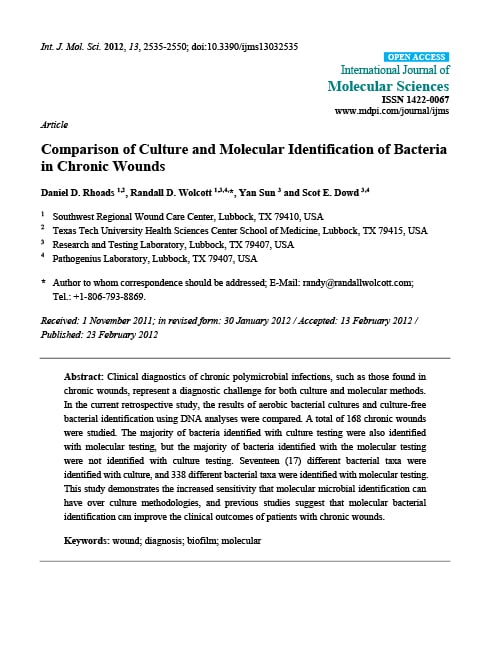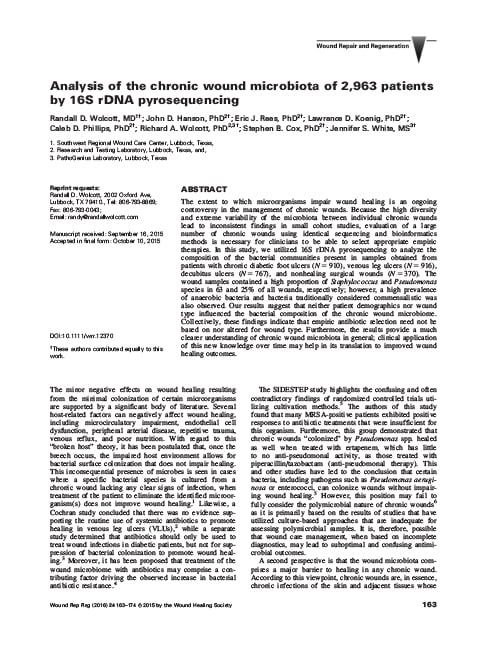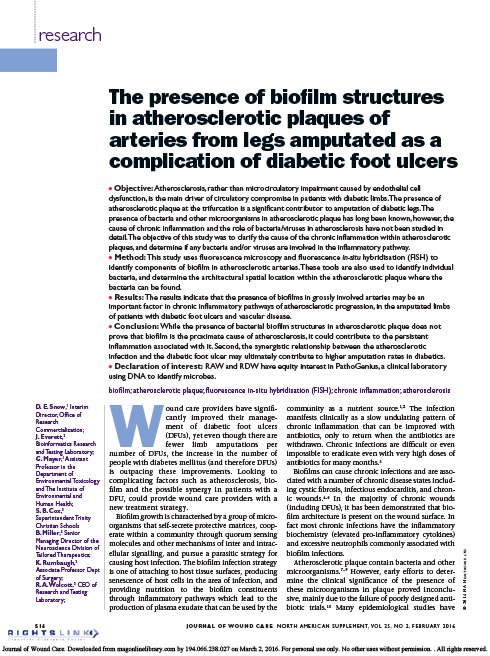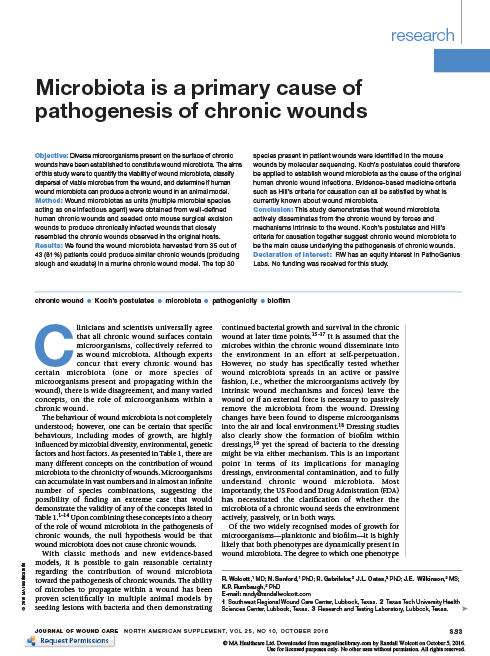- Int J Mol Sci. 2012;13(3):2535-2550. Comparative Retrospective Study: A total of 168 chronic wounds were studied, using both aerobic bacterial cultures and culture-free DNA analysis. Seventeen (17) different bacterial taxa were identified with culture, and 338 different bacterial taxa were identified with molecular testing. The majority of bacteria identified with the molecular testing were not identified with culture testing; many of these bacteria were obligate anaerobes. In the majority of the samples, culture underreported the diversity of the wound microbiota and failed to detect the most abundant bacteria in the wound. This study demonstrates the increased sensitivity that molecular microbial […]
- Wound Repair Regen. 2016 Jan-Feb;24(1):163-174. Research: The study utilized 16S rDNA pyrosequencing to analyze the composition of the bacterial communities present in samples obtained from patients with chronic diabetic foot ulcers (N = 910), venous leg ulcers (N = 916), decubitus ulcers (N = 767), and nonhealing surgical wounds (N = 370). All wound types examined in the study exhibited similar levels of microbial diversity and abundance at a genus level. Neither patient demographics nor wound type influenced the bacterial composition of the chronic wound microbiome. Staphylococcus and Pseudomonas were the two most frequent bacterial genera identified, however significant variability was observed in their abundance. Staphylococcus was the […]
- J Wound Care. 2016;25(2):S16-S22. Research Article:The study used Fluorescence microscopy and fluorescence in situ hybridization (FISH) to identify potential inflammatory bacterial and viral components of biofilm in atherosclerotic arteries as an investigation into the cause of the chronic inflammation within atherosclerotic plaques of arteries from legs amputated as a complication of diabetic foot ulcers. The results indicate that the presence of biofilms in grossly involved arteries may be an important factor in chronic inflammatory pathways of atherosclerotic progression, in the amputated limbs of patients with diabetic foot ulcers and vascular disease. Read Article…
- J Wound Care. 2016;25(Sup10):S33-S43. Research Article: 35 out of 43 (81%) wound microbiota harvested from patients produced similar chronic wounds (producing slough and exudate) in a murine chronic wound model. The top 30 species present in patient wounds were identified by molecular sequencing in the seeded mouse wounds. These results demonstrate that wound microbiota actively disseminates from the chronic wound by forces and mechanisms intrinsic to the wound. Koch’s postulates and Hill’s criteria for causation together suggest chronic wound microbiota to be the main cause underlying the pathogenesis of chronic wounds. Read Article…
MicroGenDX office and laboratory will be closed for Christmas (12/25/25). Normal office hours will resume 12/26/25.



